Aren't Chickens all the Same? Why pay more for Organic Chicken?
What's the fuss about chickens, their meat and their eggs? Aren't they all the same? Organic chicken is expensive. Why should you pay more for your meat and eggs? Why buy free range as opposed to intensively farmed poultry?
Well, they may be more expensive, admittedly, but then as the old adage goes, you get what you pay for. And aren't barn fowls that have access to the outside the same as free range chickens? Surely they are all the same? Well, no, they are not.
So what are the options, as consumers, do we have? Well, there are 4 options:
1) Battery hens2) Barn chickens
3) Free-range chickens
4) Organic chickens
So what is the difference between them?
Battery Hens versus Organic Chickens
Battery hens or caged chickens is your intensive farming option. These are hens that live mercifully short lives in horrendous conditions to provide you with both eggs and meat. They never have access to the outside world and therefore are never allowed to indulge in those normal chicken behaviors like having a sand bath or foraging for food.
Instead, battery hens share a cage 1m x 1m or less with about 18 other chickens with no space to flap their wings or escape from stressed neighbors who resort to self-preservation and lash out and peck whoever is in their way. This is despite the cruel practice of cutting the beaks, called debeaking to blunt them and prevent excessive pecking.
Repeated pecking results in loss of feathers and bleeding bodies and for anyone, like myself who has rescued battery hens it is a sad sight to behold. But it is also a joy, after about 3-4 months, when they finally regain their feathers, dignity and confidence and become the chickens that they were meant to be.
Battery hens have no nests to lay their eggs, instead their floor slopes downwards so that any egg laid rolls away before being crushed by the 36 existing feet that may get in the way. For those that die whilst in the cage, more times than not their neighbors ending up trampling all over the body so that eventually it decomposes and gets chipped through the wire to end up in bits on the floor or cages beneath.
For those battery hens that don’t mercifully die they have to live in these conditions for 2 years before they are then culled and a new lot brought in to replace them.
The food that battery hens are given is often genetically modified feed and antibiotics are given as a matter of routine to prevent any diseases rather than administering them if they get sick. With such over-crowding and filthy living conditions, disease is inevitable.
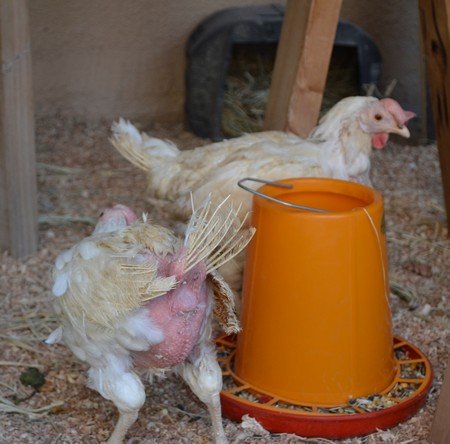
2 of my rescued battery hens before their feathers started growing
And for those of you who are reading this, and think that I am exaggerating here are 2 of 15 battery hens I rescued 2 years ago that were ready to be disposed of due to being 'past their prime'.
These are Leghorns but you would not recognize them as such. They came with pale, anaemic combs and a lot of their feathers missing. They weren't molting, they were just in very poor condition and had been cannabalized by their fellow caged mates. Fortunately, they had not been de-beaked as most battery hens are.
After feeding them plenty of greens and a good, balanced diet they soon regrew their feathers and rewarded me with excellent eggs. They were certainly not past their sell-by-date!
Barn Chickens versus Organic Chickens
Barn chickens are relatively better off, but in many instances they are just as over-crowded in their living conditions and again, don’t get to see the outside world. Here they have marginally more room with about 15 chickens to a square meter rather than the 18 birds in the battery farms.
In all fairness barn chickens are allowed to express more of their natural behavior. They are given nesting boxes to nest in, and they are given perches to sit on. Furthermore, their barn floors are usually spread with some form of litter that allows the chickens to scratch about looking for imaginary insects or some fallen food.
In Australia there are some barn chickens that only have 7 chickens per square meter and have been given the blessing of the Royal Society for Protection of Animals (RSPCA). You can easily identify such eggs at the supermarkets as the RSPCA logo is clearly placed for endorsement. However, don't be lulled into thinking that these chickens are much better to eat as they too can be fed genetically modified feed and are also given antibiotics.
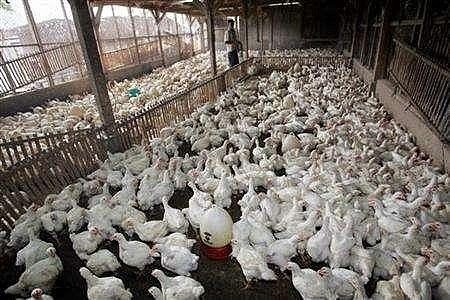
Barn chickens in over-crowded conditions
Free-Range Chickens versus Organic Chickens
Free-range chickens are lucky. They now have access to the great wide world, and are allowed to forage for insects and grubs. When housed in bad weather and at night they are stocked to 10 birds per square meter. Outside they are stocked 750 birds per hectare.
But before you head off to the supermarket to pick up your free-range eggs and chooks, think again. Yes, these birds don't have a routine antibiotic management system in place, but they don't always have access to as much of the outdoors as you think.
Free-range chickens, in the main, are housed in large barns that have access to the outdoors. So many chickens may never find the open door to the outside, spending therefore more time inside than out.
In addition, during the wet season these free-range chickens could be housed in the barns for weeks at a time.
Many free-range chicken farms have no space for stock rotation and again feeding their poultry with genetically modified feed is allowed.
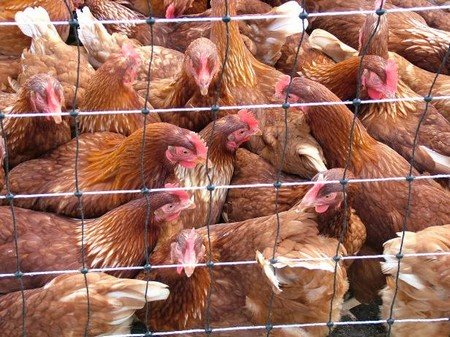
Free-range chickens - but not so free as you would think!
Organic Chickens
Finally, we look at organic chickens. Farmers here are not allowed to stock more than 5 chickens per square meter, or 1,500 per square meter. Now this is double the stocking rate for free-range chickens however, this is because all organic chickens have access to good pasture and stock rotation and rested pastures is mandatory. There is no routine use of antibiotics and genetically modified feed is not allowed. Organic feed is the only feed allowed, and the welfare of the chickens is paramount.
Where farmers of other chickens resort to forced molting and artificial lighting to increase egg production organic farmers have to respect the cycle of the chicken and allow for molting and downtime when the chicken is resting from her busy life as an egg producer.
And while we are on the subject of organic chickens versus other types of chickens don’t be lulled into a sense of false security when it comes to buying meat chickens by the names you see on the packaging. Corn-fed chickens just means that they have a higher proportion of corn in their diets, but it also means that there is a good chance that the corn that they are being fed has been genetically modified!
And if you see "chemical free" chickens being marketed, this means that when they are killed and washed they are washed without the use of chlorine before being packaged, not that they have been raised without chemicals!
So there you have it folks. The run down on what kind of life your chickens have had before you eat them, or are having while purchasing your eggs. For those of you who don't have farms, small-holdings or a patch of earth for sustainable living, you can still make a difference in the way food is being produced by others.
Don't buy caged-reared chickens or eggs. You are only helping to perpetuate a situation that is really quite appalling. Keeping chickens in your own backyard is cheap and provides you the peace of mind where you know what your chickens have been eating and how they have been kept.
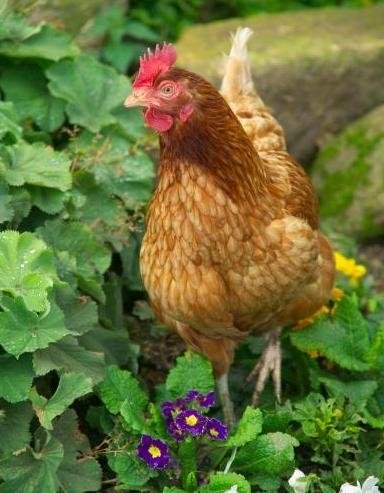
A truly free-range, organic chicken roaming amongst the flowers.
Don't Watch This Video if you are Easily Shocked or Upset
A video showing the Life of Battery Hens
Did you find this page helpful?
Sharing is a way of saying, "Thanks!"
Follow Us and Keep Up to Date
Other Chicken Resources that you May be Interested in
Go from Chickens back to Raising ChickensFeeding Chickens
Go to FAQ in Raising Chickens
Go to Caponize Chickens
Go to Butchering Chickens
Go to Natural Remedies for Sick Chickens
Go to Chicken Breeds
Go to Backyard Chickens
Go to Coccidiosis in Chickens
Go to Raising Bantam Chickens
Go to Chicken Coop Plans
Go to Chicken House Plans
Go to Free Farm Videos
Go to Farm Animals
Go to Self-Reliance
Go to Country Living
OTHER SECTIONS OF INTEREST

Click Here

Click Here
Make an Incubator

Click Here

Click Here
Raising Chickens Bonanza

Click Here






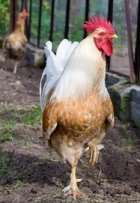
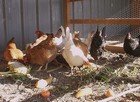
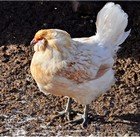
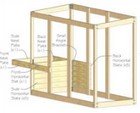
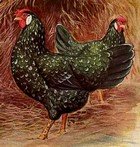
New! Comments
Do you have something of value to add? Leave me a comment in the box below.